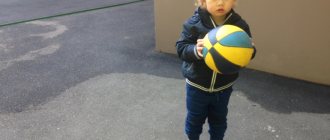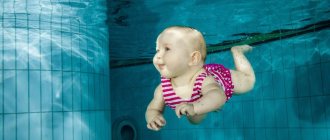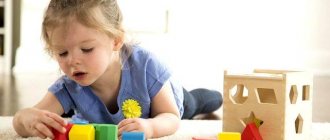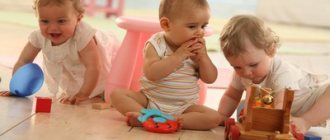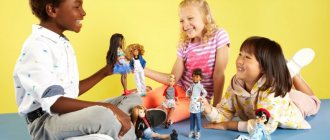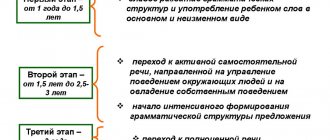The issue of protecting and strengthening the physical condition of children is considered one of the most important in almost all kindergartens. In this direction, work is carried out based on compliance with requirements and sanitary and hygienic standards, the correct approach to organizing a balanced diet, systematic hardening of children, as well as physical education and health activities.
Today, physical education for children in preschool educational institutions is of particular importance. According to statistics, in Russia in recent years the number of children aged from 3 to 7 years who are distinguished by functional deviations in health has increased to 60%. The main task of the kindergarten is the correct individual approach to each child in order to positively influence the current situation.
The importance of physical education in kindergarten for ordinary children and children with disabilities
For most children, physical education is an opportunity to become full-fledged members of society in the future. If you correctly engage in physical exercises with a preschool child with a problem that they understand, he will learn to interact with his peers, striving for his first achievements and development.
As for children with disabilities (Limited Health Opportunities), there is an individual approach for them, taking into account the following features:
- correctional and compensatory work. It involves the selection of exercises, taking into account the main and possible associated ailments. In this case, it is customary to use an integrated approach that promotes the development of physical abilities;
- preventive measures. This part is one of the most important, as it allows you to increase vitality, as well as health, improve overall well-being and strengthen the immune system;
- psychology. Often the main reason for a child’s antisocial behavior is lack of self-confidence and self-confidence. As a result, the child does not understand his role in society and does not know how to interact with peers. Therefore, an integrated approach is designed to help the child overcome such problems;
- physical education with children with disabilities in preschool educational institutions also includes educational upbringing. This means that all children with similar problems should be taught sports culture, as well as the rules of competition, which will help them gain the skills to work with other children in a team and subsequently make sports an integral part of their lives.
Note! The main exercises for children with disabilities include activities that are aimed at acquiring the most important everyday skills, which include fine motor skills of the hands, micro-orientation, and leg movements.
All these exercises are always based on provisions about the physical and psychological characteristics of the baby, as well as special methodological principles for working with each of them. For a child without disabilities, physical exercise also plays a very important role. Exercise not only promotes health, but also physical development. Physical education can help mental activity and also has a beneficial effect on the body as a whole. In this regard, educators take the following measures:
- Morning work-out. It always has a beneficial effect on increasing performance and also improves well-being for the whole day.
- Short bursts of physical exercise. They are designed to relieve fatigue and increase mental capacity in order to relieve the child from the feeling of overwork.
- Various types of hardening with parental permission. Holding physical education holidays, which are designed not only to improve well-being, but also to promote physical development, have a positive effect on the emotional state of the child, which in the future will help him perceive physical exercise as a way to improve his mood.
- In addition to morning exercises, this includes such types as finger, articulation and breathing.
- For each group, special physical activity regimes are always compiled, in which, in addition to organized varieties of physical education exercises, independent outdoor games are included in the daily routine of preschoolers, taking into account their individual and age-related characteristics.
Choosing a sport for a child
However, it is still possible to formulate some general recommendations based on what has been said. Please note that these recommendations are perfect not only when choosing a section for a child, but also for adults who have not previously been involved in sports in any serious way, but have not yet had time to develop any special health problems and want to take up prevention, “not yet.” began". Firstly, when choosing a sports section, you should pay attention not only to fashion, prestige (tennis, alpine skiing), supposed practical usefulness (boxing, karate) or entertainment (freestyle, parkour, figure skating) of the sport in question, but first of all on the involvement of the maximum number of body muscles in the training process and the scalability of loads, and secondly, on injury safety. Secondly, you must remember that the main goal is not athletic achievements, but the accumulation of a “health reserve.” Therefore, physical education and health sections in this case are preferable to professional sports federations - they have different goals and objectives. Based on these criteria, we can identify the following sports that best meet the creation of a “margin of safety” when training in a physical culture and health regime.
Features of physical education in modern kindergartens
The physical development of the baby is the object of constant monitoring by specialists, both pedagogical and medical. Therefore, the task of each institution that draws up physical education projects in preschool educational institutions with children is to prepare such programs that will fully meet the requirements of these specialists.
Modern pedagogical practice allows for the only form of work with children, this includes traditional classes that contribute to achieving positive dynamics in the matter of the child’s physical development. All methods of conducting physical education exercises in preschool institutions are based on the need to solve 2 most important problems:
- organization of such a health complex that promotes the formation of an optimal sequence of movement and gradual increases in physical activity, which will further help strengthen the child’s immunity, and also have a positive effect on stimulating psychophysiological development. This will prevent the development of many pathological changes in the body;
- meeting age-related needs for physical exercise, which should be perceived by every child as “muscular joy”, and by educators as the main means of comprehensive development of preschool children. During such physical education classes, children not only understand the characteristics and capabilities of their body, but also communicate with peers through competitions in attentiveness and dexterity.
Universal (for boys and girls):
Bodybuilding - this sport, perhaps, should be recognized as one of the best for this purpose, especially for a child who has no experience in sports. A huge number (thousands, if not tens of thousands) of exercises and their variants, the best load dosage among all the sports under consideration, allow you to work all the muscles according to an individual program, and at any level of fitness of the student. And working with weights, especially with a barbell and dumbbells, allows you to develop a variety of movement patterns that are applicable in real life. Plus, the very goal of this sport is to increase muscle strength and mass and the harmonious development of the muscular system, that is, the main goal of the exercise coincides with the main goal of the student in our case. It is advisable to supplement bodybuilding with game sports (in a lighter mode, exercise for pleasure, not for results) for additional development of coordination of movements and speed-strength endurance. Or, on the contrary, use it as a corrective effect (1-2 workouts per week) during the main activity of other sports, or as preliminary preparation for starting something else.
Swimming - this sport (like any water sports that includes swimming: water polo, synchronized swimming, etc.) also offers a fairly universal load, one way or another involving all the muscles of our body. For the best results, you should diversify the swimming styles and types of loads used (swimming on the surface on the chest and on the back, swimming underwater, diving, swimming with and against the current, etc.) at each training session. Girls need to remember that serious swimming practices develop the characteristic features of their figure (developed shoulder girdle and back muscles, the so-called “swimmer’s figure”). As an added benefit, swimming develops a skill that can be useful in real life.
Cycling - In recent years, cycling has become an increasingly used everyday mode of transport in our lives. And this is great, because cycling, contrary to popular belief, involves not only the legs, but also all the muscles of our body. In addition, cycling, like swimming, is an excellent cardio workout. It is only necessary to remind you that when riding a bicycle, a child must use protective equipment (helmet, elbow pads, knee pads, gloves) and follow traffic rules when moving or crossing highways. The additional benefit is obvious - using a bicycle in a modern city often allows you to get to the right place no slower than by car. It should be noted that cycling “acrobatics,” which have been very fashionable in recent years, are characterized by an increased risk of injury and in no case can be recommended for our purposes. Just a quiet ride.
Rock climbing - this sport, which is now experiencing a “rebirth” in Russia, also offers a fairly varied physical activity and develops excellent motor patterns that are applicable in everyday life. The only drawback is, perhaps, the weak possibility of dosing loads - all training takes place with the student’s own weight and the level of load is regulated mainly by the duration of the training.
All-around (there are many types of all-around, the described advantages are characteristic of almost any of them, but in this case we primarily mean classic athletics all-around) - an undeservedly forgotten complex sport in our time, which during the USSR was the basis of general physical training in many youth sports schools (children and youth sports schools). Currently, an adapted and specialized all-around system is the basis for the training of soldiers, law enforcement officers and the Russian Ministry of Emergency Situations. A large number of complex multi-joint movements allows you to work out all the muscles quite well, in addition to developing useful motor patterns, coordination of movements and speed-strength endurance. This sport has one “disadvantage” - today you will hardly find anywhere the proper conditions for training and coaches who can help your children achieve good results in this sport. A unique variety and “successor” of multi-events can be called parkour - the fastest possible movement without stopping in ordinary urban conditions, overcoming any obstacles (fences, walls, railings, stairs, etc.) encountered along the way. This is undoubtedly an interesting and promising sport, but it has a fairly high risk of injury, requires a high level of physical development in itself, and therefore is not suitable for our goals.
Hiking (another name for “Nordic walking”, i.e. walking with ski poles, and running with ski poles is also possible, which was used by skiers in the summer back in the USSR) - despite the widespread belief that this is a sport “for old ladies “, hiking allows you to train with quite serious loads, even for people in very good physical shape. Its main advantage is a minimum of equipment and availability anywhere. The classic fear of children and many adults is that others laugh. Let's see who will be laughing in 15 years. It’s better to walk with ski poles now than with orthopedic ones later. After mastering the basic technique, it is quite suitable for independent training. If only you have enough patience for regular classes in this case, children (and adults, to be honest) most often have problems with this.
Standard sets of exercises
If a child constantly exercises, his appetite and activity increase throughout the day. All exercises are selected in such a way as to affect the muscles of the spine, neck, lower back, shoulders, limbs and pelvis. The main goal pursued by educators is to influence the strengthening of the musculoskeletal system, as well as the prevention of diseases such as scoliosis.
It is best to do exercises in the fresh air, which is what all educators try to do in the warm seasons, and in winter a ventilated room is well suited, usually a sports or music room. Gymnastics along with hardening have a very good effect on a child’s body. In the future, this has a positive effect on the baby’s immune system and resistance to many diseases.
The set of exercises includes three stages:
- introductory part. Exercises (rotations of the head, circular movements of the arms, turns of the torso, bending);
- basic exercises. Stretching the muscles of the arms, legs and back, squats with gradually increasing repetitions, push-ups (if possible);
- final part. Light jogging with a step, shaking the muscles to relax.
The first stage includes various types of walking, as well as running, which are necessary to gradually activate different muscle groups. Next, you can begin exercises that will help strengthen and strengthen muscles, as well as joint mobility, posture and coordination. As for the final part, this usually includes some types of gymnastics and moderate walking.
Mainly for boys:
Sports (strength) gymnastics or acrobatics, as well as “yard” or “street” versions of it (mainly including exercises on the bar and with your own weight, such as push-ups, “pistol”, etc.) are a great way very seriously improve your own physical capabilities. A wide variety of loads and the number of movements performed engages the muscles of the whole body and develops movement patterns that are useful in everyday life. As a disadvantage, we can note a higher risk of injury than in universal options. Actually, that’s why these sports are considered traditionally more masculine, isn’t it?
Kettlebell lifting - with the minimum necessary equipment (a pair of kettlebells or even one kettlebell in a minimal formulation of the question), kettlebell lifting allows you to achieve very high strength results, increase coordination of movements, speed-strength endurance, and develop complex motor skills and stereotypes. Both basic exercises with weights - snatch, clean and jerk, bench press - as well as juggling and various special exercises developed later are useful. With enough imagination, you can get very impressive results with weights. The disadvantage is about the same as that of all-around competitions - it’s very bad with coaches. And without the correct technique, when practicing on your own, the result will either be reduced or the risk of injury will be increased.
Wrestling or martial arts - wrestling in this case is more preferable compared to sports that allow striking techniques. And even in this case, due to the much higher incidence of injury compared to other sports under consideration, it is worth thinking seriously before sending your child to “combat” sections. These sports also put stress on all the muscles of the body, but they also bring a lot of problems. The main advantage of martial arts is the development of self-defense abilities. However, in modern society this factor plays far from a determining role; most people in their lives do not have to enter into conflicts with the use of physical violence, or such cases are rare during their lives. Of course, it’s better to be able to and never get a chance to use it than not to be able to when you suddenly need it... But on the other hand, microtraumas and sometimes more serious injuries (they are inevitable during serious activities, and much more often than in everyday life) are practically negate the beneficial effects of increased physical capabilities. One of the largest groups of our “sports” patients, for example, are former wrestlers and “hand-to-hand fighters”. That is, these sports are more useful for other purposes than those discussed in this material.
Exercises used in classes
Physical exercises should be designed to enable children to experience different forms and possibilities of movement and to develop and improve the skills required for this. All classes must be conducted in a playful way.
You can use exercises in which children learn to climb, purposefully catch and throw, jump, move rhythmically, run fast, perform tasks in pairs, and use equipment (balls, jump ropes, ropes, mats).
When developing classes, do not forget that music is a big plus. Physical education in kindergarten using musical accompaniment helps develop a sense of tact and rhythm. And it just improves your mood. Exercises that are performed to the sounds of children's favorite songs bring great pleasure to children. After all, they can sing along and associate themselves with their favorite character.
Not the best sport for children
But, unfortunately, there are simply no sports primarily for girls that are suitable for our purposes. One could name the popular rhythmic gymnastics or figure skating, but these sports, due to their specificity, provoke, firstly, hypermobility of the joints, secondly, scoliosis, and thirdly, they are quite traumatic and uncomfortable for the joints in general. A striking example of the “benefits” of figure skating for health is Evgeniy Viktorovich Plushenko (famous Russian figure skater, two-time Olympic champion, three-time world champion, who also won a huge number of other sports awards at the highest level championships), who, while practicing figure skating, experienced extremely high loads. intensity, performing complex jumps, serious problems with the spine arose and the intervention of neurosurgeons was necessary. How dangerous high loads are for supporting joints is also demonstrated by the example of Alexei Konstantinovich Yagudin (famous Russian figure skater, rival of E.V. Plushenko, Olympic champion, four-time world champion) - he was forced to stop his sports career due to serious problems with the hip joint. These are only the most well-known cases; we simply do not know about many. Of course, when the intensity of exercise is reduced, the risk also decreases, but not enough to avoid problems altogether. Any doctor who deals with joint diseases will tell you about typical problems in girls who practiced ballroom dancing, figure skating and rhythmic gymnastics as children. Therefore, these sports themselves require additional corrective exercises and certainly cannot serve the intended purpose on their own. However, universal sports offer a fairly wide choice, which girls can freely use on an equal basis with boys.
But what about team sports (football, hockey, rugby, tennis, etc.), you ask? First of all, it should be noted that there is a much smaller variety of possible loads in such sports. The second important disadvantage is the relatively high incidence of trauma (this group of patients is even larger than “combat” athletes). Despite the advantages that such sports provide in terms of developing coordination, reaction speed, etc., their use for the purpose of developing the maximum possible muscle mass and strength is less advisable than the types of sports activity discussed above. Many of these sports (tennis, throwing, archery, canoeing, etc.) generally involve an asymmetric load, which provokes the development of scoliosis. A competent coach, of course, will force the child to work both hands equally, but this is not always the case, and for some sports it is simply difficult to do. But kayaking, for example, is quite useful for the prevention of scoliosis.
Organization of classes
Physical education in kindergarten should contribute to the development of motor skills in children, create positive motivation for them, but above all, make them happy. To achieve this, the instructor, when organizing classes, must focus on the interests and abilities of the children, on current needs, as well as on the available premises and their equipment. In all this, the following principles must be observed:
- The physical education program should contain a large number of varied outdoor exercises and games, and it is also necessary to provide a sufficient amount of time to complete each exercise.
- Classes must correspond to the development of children, that is, it is necessary to exclude excessive or underestimated requirements.
- Children should be given ample opportunity to improve and develop their abilities and skills, as well as to practice independently.
- A physical education instructor in a kindergarten implements an individual approach to each child: subgroups of children are created based on their state of health and their pace of physical development; Children's well-being is monitored during classes; The content and load of classes changes in accordance with the characteristics of each child.
- It should be remembered that the best results can be achieved through repeated repetitions, but the best way to learn is through personal example.
- It is advisable to try to avoid drills when children are competing individually. It is better to organize team competitions.

